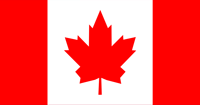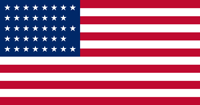What Muscles Does Paddle Boarding Work? | Maddle
If you’ve ever tried paddle boarding, you already know how rewarding it can be. Spending time outdoors on the water is fun but it can also be a workout that can target various muscles in the body. Whether you’re a seasoned paddle boarder or a beginner, you'll find paddling can strengthen muscles and improve your fitness.
Top 10 muscles worked when paddleboarding
Paddle boarding is an awesome way to get a full body workout. It’s not only fun, but works a variety of muscles, too!
Abs
Your core is one of the main muscle groups engaged when you stand up paddle board. They’re activated to maintain balance and stability on the board. This is especially true when you’re navigating rough water. When you balance on a paddle board, you’re building greater dynamic balance. This is because you’re moving, rather than being static, and you need to be steady to stay standing.
Balance requires strong abdominal muscles, particularly the rectus abdominis. Each paddle stroke, your rib cage expands and your abs flex, giving you a stronger, leaner core. And the best part about this is you get a workout without having to a single crunch!
Lats
Your lats are on either side of your back, below your armpit. Lats support upper body motions including arm extensions, rotation, and pulling.
When you paddle, your arms pull the paddle towards you. This engages the muscles in your back. When paddling, your lats contract, and that pulling motion propels the board. Strong lats provide many benefits for paddle boarding. Including strengthening your back muscles, improving your posture, and increasing padding efficiency.
Rhomboid
Your rhomboid muscles make up part of your upper back. They're responsible for pulling your shoulder blades together. This is essential for developing proper posture and stability. When you paddle, you pull the paddle towards you and engage your rhomboids. This helps stabilize your shoulder blades, and maintain proper paddling form.
Strong rhomboids can help prevent paddle boarding injury. Because they improve posture, it reduces strain on your neck, shoulders, and lower back. Strengthening your rhomboids can help to improve your upper body strength. This will also make daily movement and activity, like carrying heavy loads or lifting stuff, easier.
Traps
Paddle boarding engages your trapezius muscles, also known as the traps. The traps are a large muscle group in your upper back, neck, and shoulders. They're responsible for shrugging your shoulders, rotating your shoulder blades, and neck extension.
When you paddle, your traps help you maintain posture and balance. They stabilize your shoulder blades and prevent winging out, which can cause pain. It can also reduce the effectiveness of your stroke. Your traps will strengthen and tone with the constant movement of paddling.
Biceps
The biceps are two-headed arm muscles, located on the front of the upper arm. They're responsible for flexing the elbow joint and rotating the forearm. When you paddle board, your biceps activate. As you reach forward with the paddle, your biceps engage to lift and extend your arm. When you pull the paddle back towards you, your body engages the biceps to flex the elbow.
Paddling is a challenging workout for your biceps. Water resistance increases the load on those muscles and builds strong arms.
Triceps
The triceps are on the back of the upper arm. They’re responsible for extending the elbow joint. When you paddle board, the triceps activate when you push the paddle through the water. As you’re pushing the paddle away from your body, your triceps engage to straighten and extend your arm.
Like other muscles, water resistance against the paddle increases load on the triceps. This provides a challenging workout for these muscles.
Quadriceps
Quadriceps, also known as quads, are one of the larger muscle groups on the legs. They're located on the front of the thigh and are responsible for extending the knee joints. Your quads engage when your knees bend, which is a good position for paddle boarding. This helps to provide balance and prevent you from falling.
Rotator cuffs
The rotator cuff is a group of 4 muscles and tendons located in the shoulder joint. They're responsible for stabilizing the shoulder and rotating the arm when paddling. They engage to help maintain your posture and support your upper body. The rotator cuff is particularly important in preventing shoulder injuries while paddling.
Hamstring
Paddle boarding works muscles in your upper body and core. But it also engages your hamstrings, to provide stability and balance. When standing on a paddle board, your feet should be hip-width apart, with your knees slightly bent. When you paddle, you engage your hamstrings to stabilize your legs and stay steady on the board. This tension and contraction of the hamstring muscles strengthens and tones.
Heart
Paddle boarding is a great cardiovascular workout. It increases your heart and breathing rate, improving heart health. When you paddle, the constant activity works your upper and lower body, and core muscles. This requires your heart to pump blood to these muscles to supply them with the oxygen and nutrients. This demand for oxygen and nutrients causes your heart rate to increase. This builds your cardiovascular fitness and endurance.
The cool thing about paddle boarding is that it’s also a low-impact exercise. It places less stress on your joints than many cardio exercises, making it ideal for all fitness levels. It’s especially great for those prone to injury. Paddling regularly can help improve your heart health, lower your blood pressure, and reduce the risk of heart disease and stroke. So get out there and enjoy the water!
Can you get abs from paddle boarding?
Paddle boarding alone may not be enough to develop visible abs. Other factors such as your diet, can contribute to improving core strength and toning.
But the paddling motion itself engages your core muscles and this can develop your abs over time. To target and build visible abs, you can paddle and do other exercises, like planks and sit-ups. Paddle boarding may not give you a defined 6-pack. But it can improve your core conditioning if done with a regular exercise routine.
Can you build muscle paddle boarding?
Paddle boarding is an excellent full-body workout that can target many muscle groups. This will depend on factors such as intensity, frequency, and duration of the exercise.
How good of a workout is paddle boarding?
Paddle boarding is a low-impact, full body workout that has many other health benefits. Such as building and toning your muscles and improving heart health. Paddling is a low-stress and relaxing way to enjoy the outdoors and get some exercise at the same time. So it's a win win!
What are the most powerful muscles when paddling?
Several muscles are critical for maintaining balance, stability, and propelling a paddle board. The main muscles used are your core , back, leg and shoulder muscles.
Does Kneeling on a Paddle Board Use Different Muscles Than Standing up?
In a standing position, you are using different muscles than you would use if you were kneeling. When kneeling on a paddle board, most muscles used are in your lower body. This includes the quadriceps, hamstrings, glutes, as well as your core muscles. They're responsible for maintaining your balance and stability on the board while kneeling.
In contrast, standing on a paddle board engages both the lower and upper body. Although the upper body is more activated. This includes your shoulder and arm muscles. These upper body muscles maintain balance and stability, and propel the board. Whether you kneel or stand on a paddle board will depend on different factors. Such as the kind of workout you want to have and how much effort you’d like to exert. Kneeling is a great technique for beginners. It develop balance and coordination and gets you ready to stand on your own two feet. This is why it called stand up paddling and not kneeling paddling.
Conclusion
Paddle boarding is a great activity for a low-impact workout that’s fun and engages many muscle groups. If you’re a beginner, kneeling on the board may be an effective way to build up your balance. Soon you’ll be able to stand and can decide for yourself which version of paddle boarding you enjoy more.
Looking for a paddle board to work your muscles? Check out all of our designs in our paddle board collection.
 $CAD
$CAD $USD
$USD €EUR
€EUR